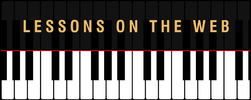|
In piano playing – we have to learn to “read” rhythm just like we learn to read notes in our music. We read notes in music just like we do words in books; from left to right. We see that each word is connected to the next one, and the next one, and even each paragraph and chapter all connect to the upcoming one – finally leading us to a conclusion at the very end. In other words…we’re always looking ahead until there are no more words to read. Notes are read from left to right also. Each note connects to the next one – each measure connects to the next one – and each movement of a piece connects to the next one. Again, we’re continuously moving forward until there are no more notes to be played. The notes aren’t all that we have to read though…we have to include dynamics, any articulations, accidentals, and most importantly for this discussion…the rhythm. So the first thing that we need to know about reading rhythm is that we read it just like words and notes…from left to right. Knowing that there will always be ‘more to come’ in reading our rhythm tells us that we need to also learn to look ahead at what is coming. Why?
We never usually have trouble with starting on beat 1 when reading rhythm in a measure.
Most often, we need to subdivide the beats in a measure so we can have an actual beat to apply to each note.
This allows you to see the upcoming beat, prepare for it and then play it correctly. “Connecting” with that upcoming beat visually and mentally is how you attack the note/beat at the right time. Some measures don’t have a note on the first beat. In this case we have to plan our attack on the first actual note of the measure – whatever beat it falls on; but we’ll still start counting from the first beat even if it is a rest instead of a note.
We can apply this Attack Strategy with any type of rhythmic value in notes and/or rests. In the following video I go over many examples of using this strategy with other types of notes and rests and play them on the piano – including 16th notes and rests and various types of combinations of notes that you will encounter as you advance in your piano playing. It will be really helpful to watch the video and then go through it while you are at your own keyboard. If you like my tips and lessons, you will love the courses over on my website. Whether you are a beginner looking to get a solid foundation to build on or you are looking to take you existing skills to that next level, the online music courses on my website https://www.pianolessonsontheweb.com will help you do just that.
|
AuthorMost blogs written by Archives
June 2020
Categories
All
|

 RSS Feed
RSS Feed